Family Icons
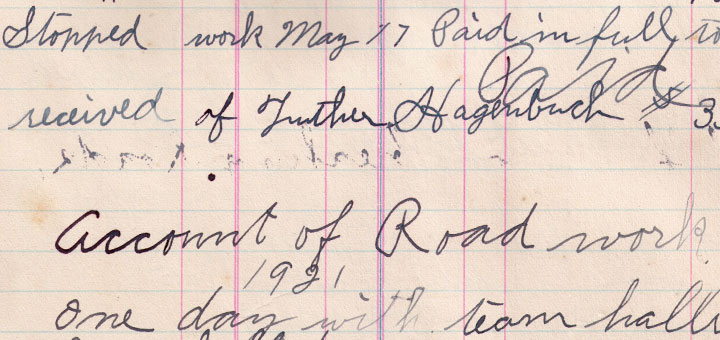
The word icon is defined as “a thing that is revered.” In past articles many pieces of family history have been written about and described that fit this definition. Photos, books, documents, certificates, and all family history ephemera can be termed as family icons. In addition, objects such as those featured in the story My Treasures Three, gravestones, furniture, even houses that were ancestral homes can be classified as family icons. These are material articles that represent parts of our family history.
Over my fifty years of researching and collecting information on the Hagenbuch family and other families in my line, I have received and organized thousands of photos which I maintain for study and exhibition. Some of these photos are tintypes dating to the middle of the 19th century. Some are displayed in large frames and hang on the walls of my home. I also have hundreds of letters and documents, several Bibles and books – a myriad of ephemera which speak to me from the past. People collect all sorts of things: art, vintage cars, seashells, lots of “stuff.” I collect relatives, ancestors, and the material articles that remind me of them, that tell me more about them, and that represent their lives from the past.
This article features a few of the family icons that I prize. However, it is difficult to rate my collection from most prized to least. They all have a story and I would be at a loss if any one of my icons was lost or destroyed.
The first is a piece of log beam with the wooden pin still in it. This was taken from the house that William Hagenbuch first lived in when he and his family moved to Liberty Township, Montour County, Pennsylvania in 1853. After the new house was built on the property in 1900 the log building was used as a chicken house and was finally torn down in about 1980. Before it was destroyed I asked the owners, Bruice, Andrew, and Julia Hagenbuch (see The Century Farm), to save me a piece of one of the log beams. Preserved and sitting on my fireplace hearth, it reminds me every day of my great great grandfather William Hagenbuch.
In addition to my family icons, my wife Linda also has some wonderful pieces of family memorabilia. Her maternal grandfather, Lloyd Brandt, was a member of a well-known grain milling family from the Annville, Pennsylvania area. In 1934 he started his own milling and feed business in Mechanicsburg, PA. In the above photo in front of the piece of log beam is a lunch pail which Linda’s grandfather Brandt carried to and from his mill every day.
Sitting on the mantelpiece of my fireplace is a clock which was owned by Linda’s parents. When her father, Rev. Roy Gutshall, gave us the clock in about 1980 he told us that he and Linda’s mother, Ethel “Brandt” Gutshall, purchased the clock early in their marriage and had restored it to working order. Both the lunch box and clock are very important family icons.
My oldest icon is the piece of wooden beam and also many old photos that I possess. But, family icons do not have to be a certain age to be memorable. I have a ledger book which dates to the early 1920s that was kept by my grandfather Clarence Hagenbuch when he was a road supervisor in Limestone Township, Montour County. It holds pages and pages in his writing of the daily work and payments made to individuals for road work and materials, some even to his brothers Luther and Percy. In addition to the road work descriptions, “Pap Pap” also wrote in accounts of his daily work on the farm and his hired hands. It is a window to the past and was an important part of my grandfather’s life as he provided for his young family almost 100 years ago.
My maternal grandfather, Odis Guy Faus (my middle name is Odis), was a jack of all trades. Never owning his own farm, he was a truck farmer, butcher, carpenter, and mason, just to name a few of his occupations. Before his death in 1983, I enjoyed making several hundred gallons of sauerkraut with him and listening to his stories about butchering while looking over the wide range of tools which he kept in his shop at Shiremanstown, PA. After his death, my mother came into possession of his hog scraper which Grandpa Faus had carved his initials in. Before her death in 2011, my mother made sure that I received the hog scraper (which she inscribed with my name) as a fond memory of my namesake.
Along with the many stories my father Homer shared with me, he also had a few icons which he possessed. One is a large marble which he kept in a metal box. It always sat on his dressing table in his bedroom. It was given to him by his maternal grandfather, Samuel Sechler, when he was a boy. In fact, the story Dad told me was that Grandpap Sechler gave each of his grandsons a similar marble when they were all young boys.
What family icons do you own and cherish? Will they be passed on to your descendants; to someone in the family who will know the important stories behind them and their owners? It saddens me to think of the many icons that have been lost or destroyed. In reading Andreas Hagenbuch’s will and knowing that his book, Wahren Christentum (True Christianity) had been a prized possession of his which was passed on to his son John, I wonder if that book was ever destroyed; or is it surviving to this day in an antique book shop or in someone’s rare book collection?
In the home of Bruice, Andrew, and Julia were large framed portraits: one of Hiram Hagenbuch born 1847 and another of his wife Mary Ann “Lindner” Hagenbuch born 1853. Before her death, Julia had marked those large portraits to be given to me. However, after her death, only the portrait of Hiram was present (which now hangs in my home). We do not know what happened to the companion portrait of his wife Mary Ann.
As generations pass, existing family icons are passed on to children and grandchildren. Icons need to be preserved, so that we make sure they are specifically passed on to those family members who will preserve them, have information written down about them, and are responsible to continue passing them on to future generations of family preservationists. Horror stories abound of furniture, clocks, antiques, and even photos and documents that are not appreciated by relatives being sold at auctions and shops.
In doing this deed, which is dastardly to those of us who preserve family history, a relative’s life is minimized and forgotten; and the windows to their past lives are dimmed forever. Our ancestors and relatives who have passed away deserve more than a gravestone with dates inscribed on it. They deserve to be remembered through their stories and the icons that speak of the short time they spent among the living.

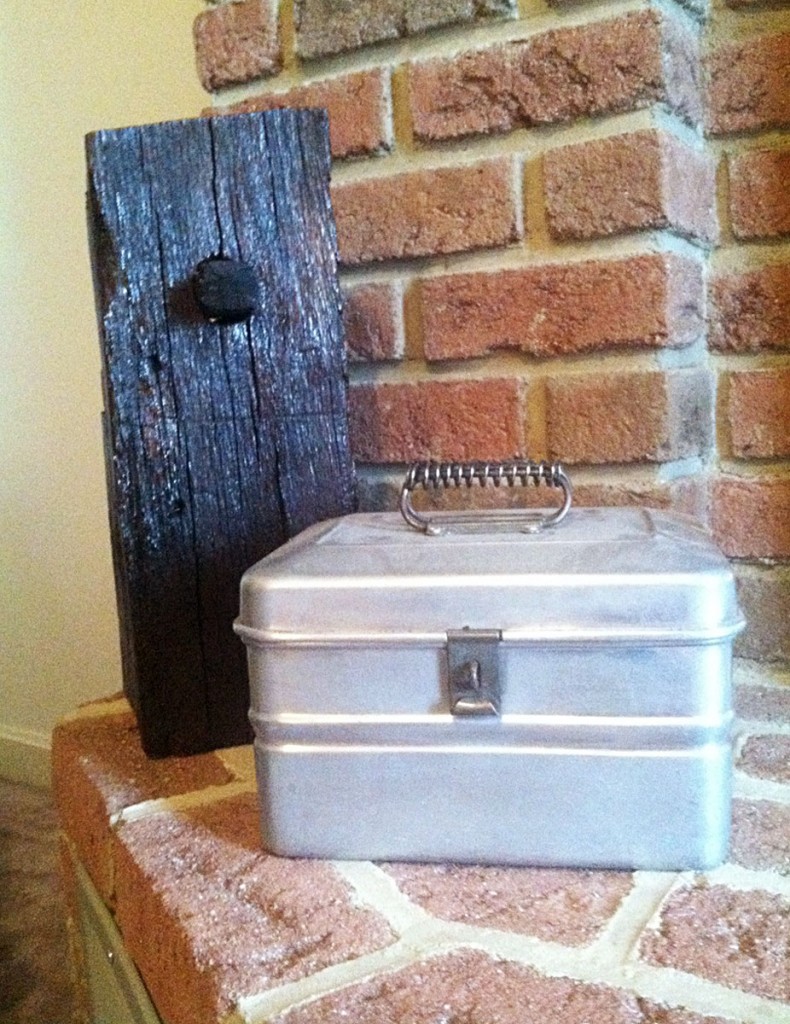
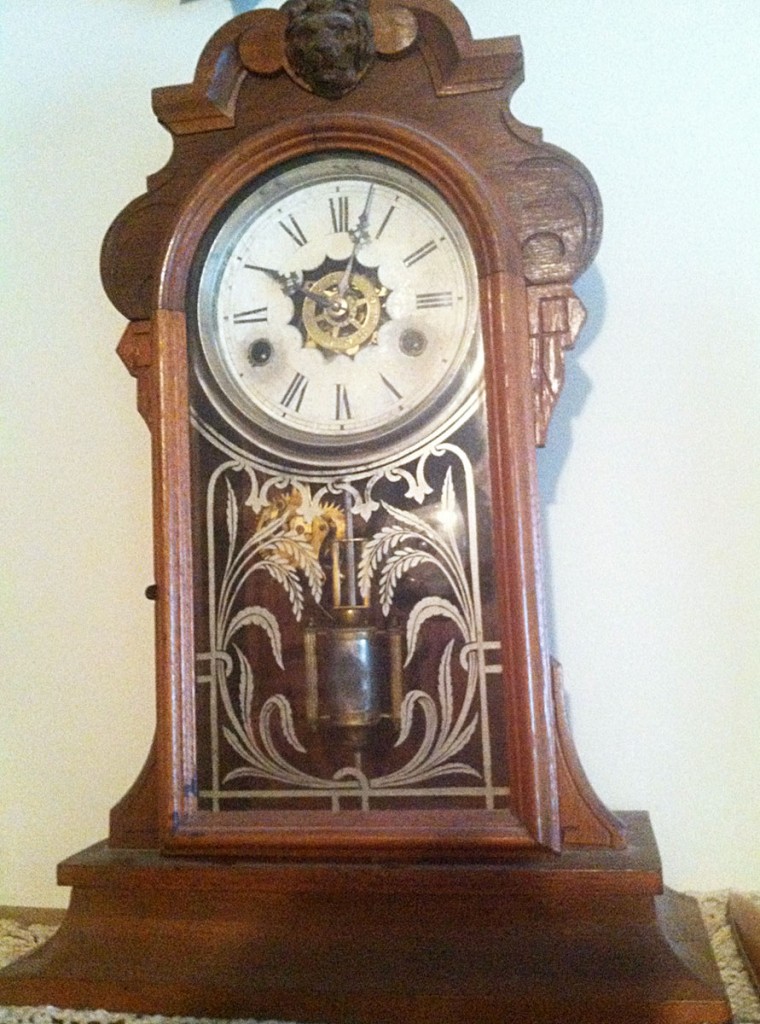
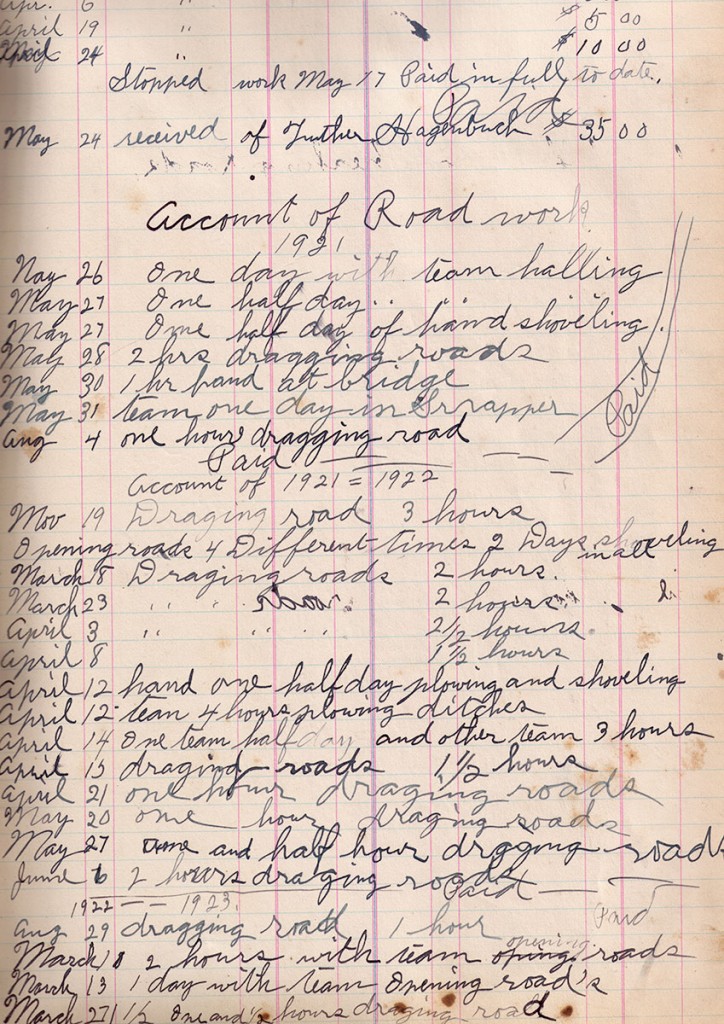
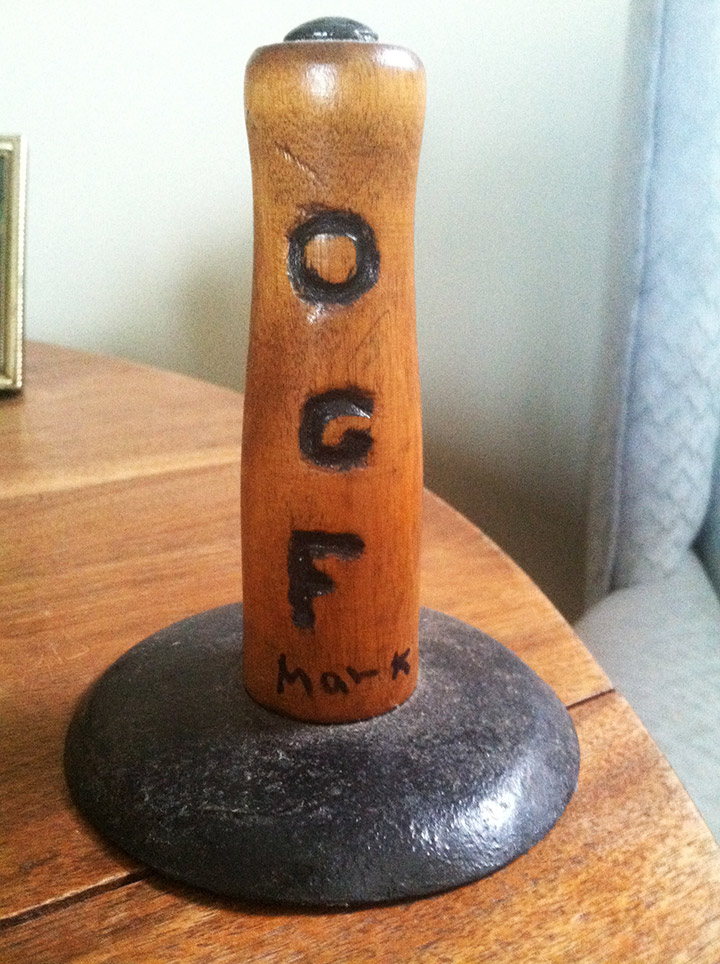
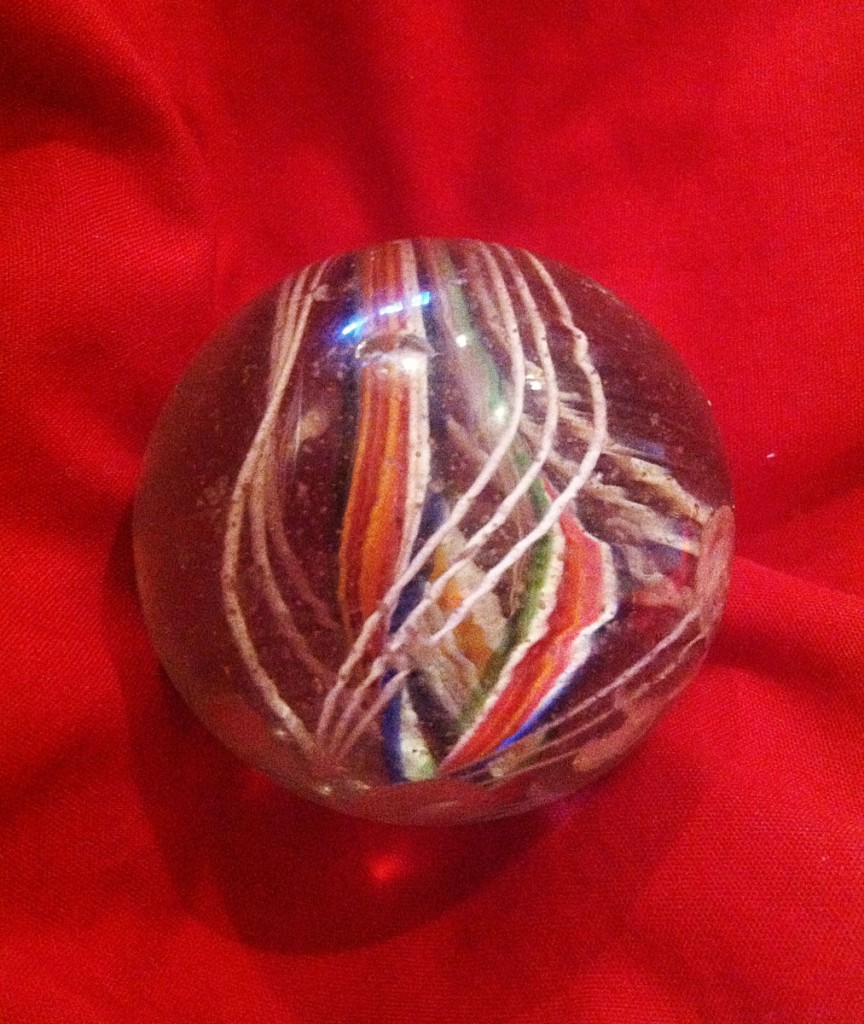
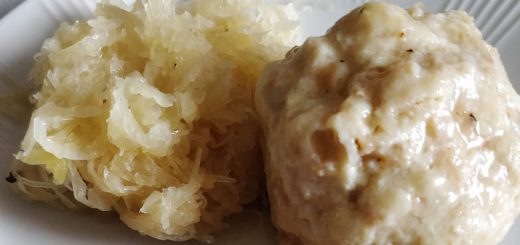
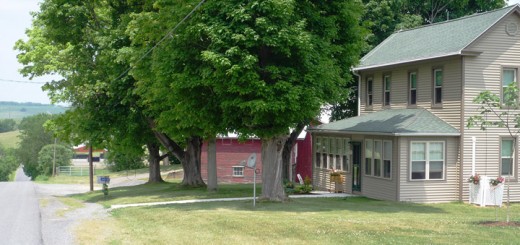
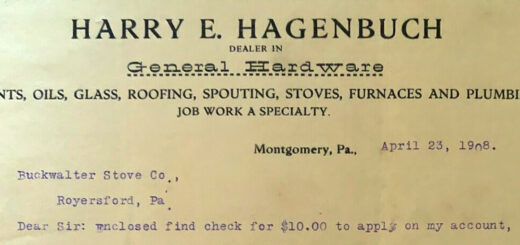













looking around at an antique shop I found some items that may interest you, a Templar Regalia Belt and hat from the 1920s. According to the tag both items belonged to Clarence D. Hagenbuch, the tag also mentioned a gold finish barrel sword. I googled the name out of curiosity and found your blog. Do you have any interest in these items?